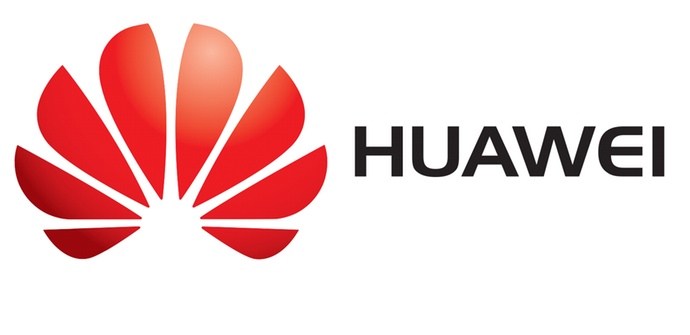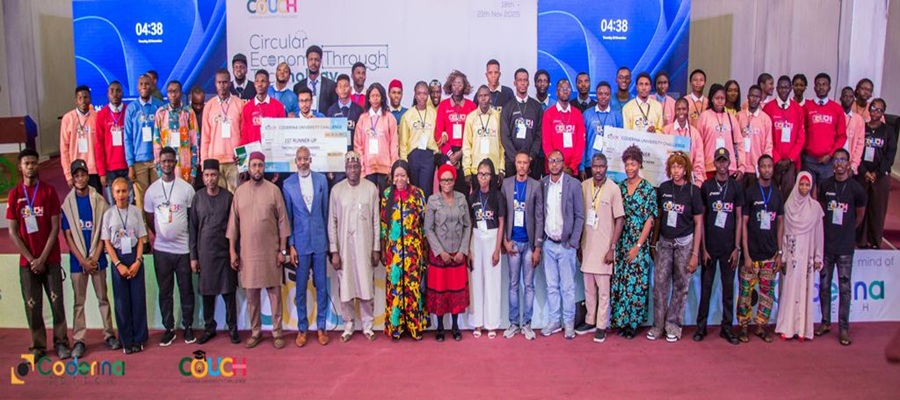Telecom
Huawei Introduces Key Architecture Index to Drive 5G Acceleration

Huawei has held an online IP Gala conference with its industry partners to introduce the Key Architecture Index (KAI) and share its applications.

This was part of the recent AfricaCom event with the theme “Leading intelligent IP networks, accelerating intelligent connectivity.”
In the carrier environment, the IP network enables fixed-mobile convergence, network evolution and the shift towards multi-services and the cloud era.
At the moment, a challenge facing most IP (internet protocol) networks is unnecessary complexity, due to a lack of IP architecture standardisation.
Most networks were built without adequate foresight, and next-generation networks, be they 3G, 4G or 5G, were built on top of existing networks.
This created network complexities around lack of visibility, management and control.
“We have to forever simplify our networks while moving to intelligent self-driving autonomous networks,” said Samuel Chen, director of Huawei Southern Africa Marketing and Solution Sales Department at the conference.
KAI architecture specifically addresses complexity challenges, enabling future-ready networks with easy integration, visibility, management and control, by measuring five dimensions of the transport network.
The KAI model indexes are Congestion Free, Scalability, Simplification, Always-on and Intelligence. Each dimension is evaluated across the optical, IP and the manager/controller/analyzer layer.
“The KAI model helps measure the results at an acceptable level across all of our offering portfolio so that we can realise a cloud-native based approach to monitoring the architecture,” said Hugh Ujhazy, Vice President, IOT and Telecom at IDC.
Zoltan Miklos, general manager of Network Planning at MTN South Africa delivered a presentation at the conference, outlining the Best Experience Congestion-Free IP Transmission Network, which would be the direct result of following an architectural model. He emphasised that it was critical to build networks with customer experience in mind.
“User experience is not only related to the wireless network, but to all aspects that form part of the service chain – from the customer to the core of the network,” he said.
Miklos said MTN was working hard to improve network architecture and was achieving excellent packet-lose rates of less than 10-4 across its entire network. The continuous P3 best-in-test achievements MTN has obtained were testimony to this, he said.
A white paper titled Transport Network Architecture Index in 5G and Cloud Era published by industrial intelligence company IDC this year has encouraged many operators across the world to move their network towards the KAI index model, looking to future-proof their network architecture.
Tony Hu, Huawei vice president of Data Communication Product Line said that a step-by-step approach was the right way for customers to embrace this evolution onto the KAI architectural model.
“We need to think not just as box layers. We need to think about the system layers, the architecture layers,” said Hu. “We need to rethink how services will be running on future IP networks and how to evolve our current networks for the future.”
He said IP networks could evolve by evaluating the current network against the five KAI dimensions. The KAI score obtained could then help the carrier to define the target network and the necessary corrective steps to be taken to get there.
The KAI model measures a network’s five dimension as follows: Congestion Free: Fiberization Ratio, 10G/25G to Site, Convergence Ratio, Network Slicing.
Simplified: SRv6/EVPN, Precise Clock Sync (G.8275.1).
Scalable: IP Capacity, Fixed + Mobile + Enterprise Network Convergence, Control & User Plane Separation (BNG).
Always On: Topology – Ring & Mesh, Network & Service Decoupling, Protection – IP FRR/TI-LFA, IP + Optical Synergy.
Intelligent: Auto Provisioning, Visualization on GIS & Logical Topology, Trouble Recovery(mins level), Predictive & Proactive Maintenance , Full Stack AI.
Ujhazy said inadequate levels of coverage or performance led customers to change providers. By contrast, network excellence led to improved customer experience, which would then enhance the provider’s success in the market.
“In recent years, the transport network has become the deciding factor in the quality of customer experience,” he added.
Telecom
COUCH 2025 Grand Finale Highlights Student Breakthroughs, Secures Government Pledge for University Research Commercialization

Coderina Education and Technology Foundation, in partnership with the National Universities Commission (NUC), successfully hosted the Grand Finale of the Coderina University Challenge (COUCH) 2025 at the NUC Auditorium, Abuja.

A cross section of attendees
The event gathered top government officials, university leaders, industry partners, and the ten finalist teams selected from over sixty-two initial entries nationwide.
This year’s challenge, themed “Circular Economy Through Technology” spotlighted the potential of Nigerian university students to develop scalable, tech-enabled solutions that address pressing national issues in sustainability, waste management, energy transition, and the circular economy.
The Grand Finale reaffirmed a consistent message shared across all keynote addresses: Nigeria must accelerate the movement of university research from shelves into practical innovation, commercialization, and industry adoption, a key driver of national development and economic growth.
In his opening address, Mr. Olufemi Niyi, chairman, Coderina Board of Directors, emphasized that university projects must not remain buried in archives.
He highlighted COUCH as a platform proving that research can become functional innovation.
Mr. Niyi called on donors, development partners, and private sector stakeholders to support COUCH as a sustainable national innovation pipeline and encouraged investors to channel resources into skills development and technology innovation among youth.
In his keynote address, Dr. Kingsley Tochukwu, the minister of Innovation, Science and Technology, commended the COUCH programme for its role in moving research “from the shelves to the marketplace,” a key priority under the ministry’s national innovation agenda.
He noted that the initiative exemplifies the type of collaboration and commercialization pipeline needed to unlock Nigeria’s scientific and technological potential.
He highlighted several priority areas critical to advancing the country’s innovation landscape:
“Strengthening Nigeria’s innovation ecosystem through coordinated national frameworks and partnerships; expanding digital innovation pathways to accelerate the adoption of emerging technologies, and building a tech-driven economy that delivers measurable value and global competitiveness”.
The Minister added that “Creating new opportunities for youth innovators, ensuring they are empowered to participate in and drive the innovation economy, are part of the key focus areas of the Ministry
He also expressed the Ministry’s readiness to partner with COUCH, Coderina, and the NUC to incubate and scale these student-led innovations.
Mallam Abdullahi Yusuf Ribadu, the executive secretary of NUC acknowledged the twelve universities nominated for the pilot edition by the commission.
He urged the finalists to use their prize money to advance entrepreneurship and technical skill development, reinforcing the NUC’s commitment to fostering innovation-driven learning across tertiary institutions.
In a remarkable commitment, the Minister donated five million naira to ‘Waste2Light’ from FUT Minna and announced an intention to collaborate with all ten finalist universities to support commercialization.
Dr. Tope Kolade Fasua, special address to the President on Economic Affairs, stated that technology remains the largest driver of global economic growth, stressing that Nigeria’s economic transformation is intertwined with youth innovation.
He commended Coderina and advised for greater visibility and national media outreach; creation of an innovation “museum or archive” for brilliant ideas, and the establishment of centers where theories and research can be turned into products.
He concluded that the future of Nigeria’s economy lies in the hands of today’s young innovators.
Professor Sa’adatu Hassan Liman, special guest at the programme and vice-chancellor, Nasarawa State University, delivering her address on “Sustainable National Transformation,” emphasized the need for stronger industry–university collaborations.
She also emphasized need for entrepreneurial university culture; digital literacy in emerging technologies such as AI, blockchain, IoT; adoption of virtual learning and remote laboratories, and inclusive innovation for underserved communities.
She highlighted AI as a catalyst for reimagining teaching and learning, including teacher retraining and curriculum enhancement.
The competition had two categories of prizes recognizing both technical excellence and public engagement.
Winners of the first category, The Challenge, based on pitch and prototype presentation was Team IMSU – Imo State University , taking home the star prize of ₦5,000,000; 2nd Place winners: Team Neuronaut Nile University Prize, ₦2,500,000, and 3rd Place – Team Waste2light from the Federal University of Technology, Minna: ₦1,500,000.
The People’s Choice Awards winners, based on social media engagement and public voting, are Team ADSU Innovators – Adamawa State Uni.: ₦250,000; 2nd Place -Team Scraplink, Lagos State University: ₦150,000, and 3rd place – Team Circle from the Federal University of Technology, Akure, took home ₦100,000.
Giving COUCH overview, Ms. Christiana Anthony, the Project Lead, reaffirmed that COUCH is not merely a competition but a structured innovation development program.
She highlighted the strong collaboration between Coderina and the NUC, noting that the program has created a national pathway for students to design, build, test, and pitch solutions with real potential for commercialization.
The COUCH 2025 grand finale demonstrated Nigeria’s readiness to harness university-driven innovation as a catalyst for economic growth, job creation, and sustainable development.
Telecom
Google Invests $2.1m to Boost Nigeria’s AI Development

Google.org has announced a $2.1 million (₦3 billion) investment to support Nigeria’s artificial intelligence sector, targeting the creation of one million digital jobs and strengthening the country’s growing tech economy.

The initiative is aligned with Nigeria’s National AI Strategy and is expected to contribute significantly to the nation’s digital transformation, with AI projected to add $15 billion to the economy by 2030.
The funding will support partnerships with local organizations focused on skills development and cybersecurity.
FATE Foundation and the African Institute for Mathematical Sciences (AIMS) will collaborate with universities to integrate AI curriculum into classroom teaching, creating a sustainable pipeline of AI-ready graduates.
Similarly, the African Technology Forum (ATF) will run an AI innovation challenge, guiding developers from bootcamp training through product development and pitching stages.
Google also emphasized digital safety. Junior Achievement Africa will scale the “Be Internet Awesome” curriculum to teach online safety to youth, parents, and teachers nationwide, while the CyberSafe Foundation will provide cybersecurity training and technical support to public institutions to strengthen digital infrastructure defenses.
Highlighting the human impact of its digital skills programs, Google cited the case of Joel Kiate, a digital marketer in Abuja, who secured employment after completing Google’s training despite failing university entrance exams five times.
A Google spokesperson said: “When we connect people with the right tools and opportunities, they don’t just find jobs—they build careers and become part of Nigeria’s growing digital economy.”
The investment reflects growing confidence in Nigeria’s tech sector, which continues to position itself as a major hub for digital innovation in Africa.
Telecom
Team OneGrid Energies Wins 3 Million @MTN PachiPanda Challenge

As Team OneGrid Energies walked away with the grand prize of three million naira and an HP laptop each at the MTN 2025 PachiPanda Challenge, the strongest message from the closing ceremony held on Wednesday, November 26, 2025, was not just about winning ideas, but about building ideas that pay.

OneGrid Energies
Tobechukwu Okigbo, Chief Corporate Services & Sustainability Officer at MTN Nigeria, delivered a powerful charge to the next generation of African climate innovators. He said, “Too often we celebrate innovation only for its brilliance. Today I challenge you to go further and create bankable innovation. Look around you, find the problems that need solutions, and solve them with boldness. The future belongs to you, and Africa is counting on you all to rise and deliver the change we have been waiting for.”
Okigbo reminded the finalists that Africa’s greatest asset is its youth, and that digital tools, from AI to the internet, have levelled the global playing field. “The future is yours,” he declared. “You are the leaders of tomorrow and with the necessary tools and boldness, you have the platform to rise and rewrite Africa’s story.”
The winning solution by OneGrid Energies, a scalable platform providing smallholder farmers with hyper-localised climate data and optimised planting advice, was hailed as a perfect example of innovation that can both save livelihoods and create viable business models.
Joshua Ndaman secured second place with his innovative solution, BuyScrap, a tech-driven platform that streamlines the collection and recycling of electronic waste. By ensuring that discarded electronics are ethically reused and repurposed, BuyScrap supports a circular economy and provides a reliable link between households and processors in the e-waste value chain.
Representing Dr. Joseph Daniel Onaja, Director General, Nigerian Conservative Foundation, Uchenna Achunine, Director, Business Development and Communications, Nigerian Conservation Foundation, congratulated the winners and commended their efforts in the two-day, intense pitch hosted by MTN Nigeria in partnership with WWF, the three-day PachiPanda Challenge held from 24–26 November 2025, transformed the MTN Rooftop in Lagos into a launchpad for climate-tech startups, proving that African youth are not waiting for permission to solve the continent’s biggest challenges; they are already building the profitable, impactful solutions the world needs.

 General News2 days ago
General News2 days agoNiDCOM Launches Diaspora Startup Challenge to Boost Nigerian Talent

 News2 days ago
News2 days agoLagos Launches Tele-Vet, Nigeria’s First Veterinary Call Centre

 E-Financial2 days ago
E-Financial2 days agoCAC to Shut Down Unregistered PoS Operators by January 2026

 Telecom2 days ago
Telecom2 days agoNigeria Lacks AI-Ready Data Centres, Trails in Capacity – Nnamani

 Telecom2 days ago
Telecom2 days agoAnambra Leads Southeast in Digital Governance Under Soludo’s ICT Agenda

 General News2 days ago
General News2 days agoOptimus AI LABS CEO Showcases AI Breakthroughs in Nigeria’s Financial Sector

 General News2 days ago
General News2 days agoPromoPrint Rekindles Nigerian Resilience @ 25th Anniversary

 E-Business1 day ago
E-Business1 day agoReport Reveals Half of 2025’s Compromised Passwords were Already Leaked
























